Galvanic cells - device, principle of operation, types and main characteristics
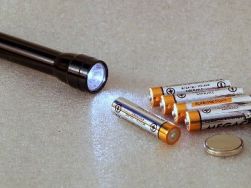 Prerequisites for the appearance of galvanic cells. A bit of history. In 1786, the Italian professor of medicine, physiologist Luigi Aloisio Galvani discovered an interesting phenomenon: the muscles of the hind legs of a freshly opened corpse of a frog suspended on copper hooks contracted when the scientist touched them with a steel scalpel. Galvani immediately concluded that this was a manifestation of "animal electricity."
Prerequisites for the appearance of galvanic cells. A bit of history. In 1786, the Italian professor of medicine, physiologist Luigi Aloisio Galvani discovered an interesting phenomenon: the muscles of the hind legs of a freshly opened corpse of a frog suspended on copper hooks contracted when the scientist touched them with a steel scalpel. Galvani immediately concluded that this was a manifestation of "animal electricity."
After the death of Galvani, his contemporary Alessandro Volta, as a chemist and physicist, will describe and publicly demonstrate a more realistic mechanism for the occurrence of electric current when different metals come into contact. Volta, after a series of experiments, will come to the unequivocal conclusion that the current appears in the circuit due to the presence in it of two conductors of different metals placed in a liquid, and this is not at all “animal electricity”, as Galvani thought. The twitching of the frog's legs was the result ...
How to choose the right driver for LEDs
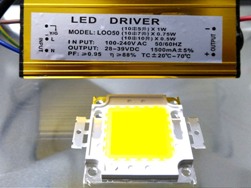 The leading position among the most effective sources of artificial light is occupied today by LEDs. This is largely due to the quality of power sources for them. When working in conjunction with a correctly selected driver, the LED will maintain a steady brightness of light for a long time, and the life of the LED will be very, very long, measured in tens of thousands of hours.
The leading position among the most effective sources of artificial light is occupied today by LEDs. This is largely due to the quality of power sources for them. When working in conjunction with a correctly selected driver, the LED will maintain a steady brightness of light for a long time, and the life of the LED will be very, very long, measured in tens of thousands of hours.
Thus, a correctly selected driver for LEDs is the key to a long and reliable operation of the light source. And in this article we will try to reveal the topic of how to choose the right driver for the LED, what to look for, and what are the drivers for LEDs in general. A driver for LEDs is called a stabilized power supply of constant voltage or direct current. In general, initially, an LED driver is a source of stable current, but today even sources ...
Types and designs of dimmers for lamps
 Today it is unlikely that anyone will be surprised by a dimmer for lamps. Such regulators are often found in enterprises and in everyday life, they allow you to conveniently and flexibly adjust the brightness of the light, eliminating the need for the consumer to install several light sources of different intensities in the same room.
Today it is unlikely that anyone will be surprised by a dimmer for lamps. Such regulators are often found in enterprises and in everyday life, they allow you to conveniently and flexibly adjust the brightness of the light, eliminating the need for the consumer to install several light sources of different intensities in the same room.
It is very convenient to regulate the light - if in the room, for example, people not only work, but also relax. In particular, for the home living room: if you need bright light - the lamps turn on at full power, and if the family wants to relax comfortably after a working day - you just need to turn the dimmer knob - and the light will become softer, a little dimmer, will not hurt your eyes. Such dimmers are also called dimmers (from the English word dimmer - dimmer). Dimmers differ in appearance, and depending on the control method there are: with a rotary knob, with a control key (or with a sensor) ...
How modern automatic watering systems are arranged and work
 The time has come when knowledge of electricians has become necessary for people of all specialties. New technologies based on the use of electronics, microprocessor developments have firmly entered our lives and everyday life. Even ordinary plant care can now be automated, entrusted to robots and automatic systems that, after setting user parameters, will maintain a microclimate, provide strictly metered watering, and create optimal conditions for growth and development.
The time has come when knowledge of electricians has become necessary for people of all specialties. New technologies based on the use of electronics, microprocessor developments have firmly entered our lives and everyday life. Even ordinary plant care can now be automated, entrusted to robots and automatic systems that, after setting user parameters, will maintain a microclimate, provide strictly metered watering, and create optimal conditions for growth and development.
The main elements necessary for the operation of the automatic plant watering system are shown in the picture explaining the principle of automation.The main objective of such a system is to provide plants with the amount of water they absolutely need, taking into account the actual precipitation. To this end, numerous scientific studies have already been carried out. ...
Where to get electricity in nature
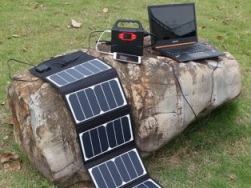 The life of a modern person is hard to imagine without electricity. In everyday life, many different electrical appliances and electronic devices are used that make life comfortable and allow solving various problems. At a picnic or on a camping trip, the question arises of where to get electricity in nature, because even far away from civilization, modern man cannot do without a number of electrical appliances and devices.
The life of a modern person is hard to imagine without electricity. In everyday life, many different electrical appliances and electronic devices are used that make life comfortable and allow solving various problems. At a picnic or on a camping trip, the question arises of where to get electricity in nature, because even far away from civilization, modern man cannot do without a number of electrical appliances and devices.
We will not give tips on how to get electricity from wood, fruits, natural materials, etc. - these methods will fit only as an experiment showing the presence of minimal potential. We are only interested in reliable and proven methods that will provide power to electrical appliances for the required period of time. If you need to use various gadgets in nature, photo, video and audio equipment ...
Using the energy of gravity - how is it possible
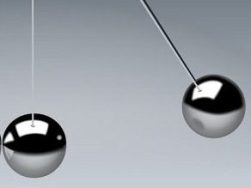 In the early 2000s, Chinese inventors Lawrence Tseng and Li Cheng (Lawrence TSEUNG, Cheung LEE) proposed a method of extracting energy from gravity based on their adjusted pendulum theory. They realized that if you push the pendulum, it immediately begins to withdraw gravitational energy.
In the early 2000s, Chinese inventors Lawrence Tseng and Li Cheng (Lawrence TSEUNG, Cheung LEE) proposed a method of extracting energy from gravity based on their adjusted pendulum theory. They realized that if you push the pendulum, it immediately begins to withdraw gravitational energy.
If the momentum of force F continues to be applied to the pendulum in resonance, then it will continue to extract gravitational energy. This energy can be extracted, for example, if a metal pendulum is forced to cross the lines of a magnetic field, then mechanical energy will be converted into electrical energy. Although the swinging motion of the pendulum begins to slow down, the pendulum can again be accelerated due to the impulse of force F. The swinging movement can even be replaced by a rotational one, for more effective implementation of this principle. Such devices can work everywhere, even on the moon, because gravitational energy is unlimited ...
The practical application of electrolysis
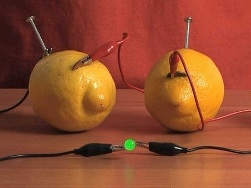 When an electric current passes through a solution or a melt of an electrolyte, dissolved electrodes or other substances that are the products of secondary reactions on the electrodes are released on the electrodes. This physicochemical process is called electrolysis.
When an electric current passes through a solution or a melt of an electrolyte, dissolved electrodes or other substances that are the products of secondary reactions on the electrodes are released on the electrodes. This physicochemical process is called electrolysis.
The essence of electrolysis is in the electric field created by the electrodes, the ions in the conducting fluid come in an orderly motion. The negative electrode is the cathode, the positive is the anode. Negative ions rush to the anode, called anions (hydroxyl group ions and acid residues), and positive ions rush to the cathode, called cations (hydrogen, metal, ammonium ions, etc.) An oxidation-reduction process takes place on the electrodes: the cathode electrochemical particle reduction. Dissociation reactions in an electrolyte are primary reactions, and reactions that occurdirectly on the electrodes ...
What is nanoelectronics and how does it work
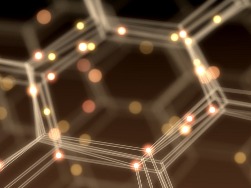 The field of electronics engaged in the development of technological and physical foundations for the construction of integrated electronic circuits with element sizes less than 100 nanometers is called nanoelectronics. The term "nanoelectronics" itself reflects the transition from the microelectronics of modern semiconductors, where the sizes of elements are measured in units of micrometers, to smaller elements - with sizes of tens of nanometers.
The field of electronics engaged in the development of technological and physical foundations for the construction of integrated electronic circuits with element sizes less than 100 nanometers is called nanoelectronics. The term "nanoelectronics" itself reflects the transition from the microelectronics of modern semiconductors, where the sizes of elements are measured in units of micrometers, to smaller elements - with sizes of tens of nanometers.
With the transition to nanoscale, quantum effects begin to dominate in the schemes, revealing many new properties, and, accordingly, marking the prospects for their useful use.And if for microelectronics quantum effects often remained parasitic, because for example, with the decrease in the size of the transistor, the tunnel effect begins to interfere with its operation, then nanoelectronics, on the contrary, is called upon to use such effects as the basis for nanoheterostructured electronics ...
